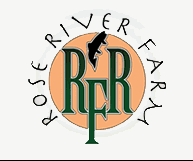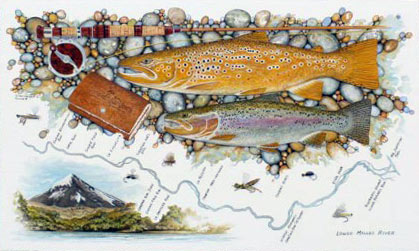Dolly Varden, January 2013, Fish of the Month!
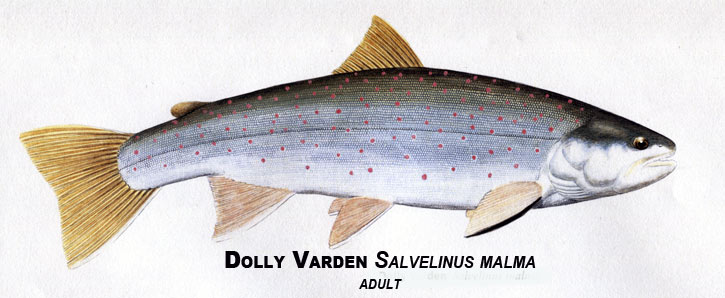
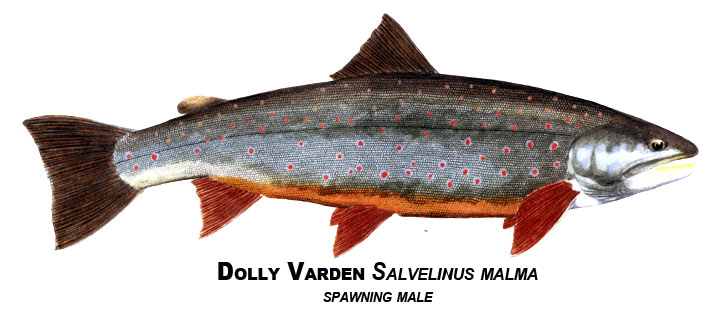 Dolly Varden
Dolly Varden
Salvelinus malma
Local Names:
Dolly char, Redspotted trout, Western char, Oregon char, Salmon trout
Average Size:
12 to 18 inches (30.50 to 45.75 cm.)
0.50 to 1.5 pounds (0.25 to 0.70 kg.)
Distinguishing Field Marks:
Color and color pattern are reliable distinguishing field marks for this species. (See the illustration.)
-
See illustrations for color and pattern, note the pink or light red spots on the sides.
-
There are no spots on the head or fins.
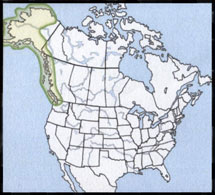
-
The anal and pelvic fins have cream or white leading edges, the caudal has a white lower edge,and the pectorals have a black leading edge
-
The head of non-breeding adult Dolly Varden is more rounded in profile than that of other chars, especially the Bull trout, with which it can be confused. The upper jaw extends only a short distance beyond the rear edge of the eye.
-
The trailing edge of the tail fin is nearly square and the caudal peduncle is slender.
-
The anal fin has 9 to 11 principle rays.
North American Range:
Map to the right shows approximate range in North America.
Biology:
There are both landlocked and anadromous populations of Dolly Varden (named for a character written by Charles Dickens in his novel Barnaby Rudge who wore a green dress with pink polka-dots). Landlocked Dolly Varden are found in lakes while the anadromous form live in coastal streams. Most sea-run Dolly Varden return to the streams of their birth to spawn, although many may stray to other rivers. They spawn in the fall months, from September to early November, with runs commencing in August and September. Landlocked adults also spawn at this time.
Young Dolly Varden may spend from a few months to as long as 3 to 4 years in their natal streams before descending to lake or marine habitats. While in the smaller streams, Dolly Varden travel widely. When they reach the marine environment, some will remain in the estuary while others move short distances, although never far, offshore. Sea-run adults often return to spawn only on alternating years. Though they usually enter fresh water from late July to September, they might enter as early as May, or as late as December, depending on water temperature.
Diet:
Beginning with zooplankton, graduating to aquatic insects and whatever other aquatic invertebrates are available, including snails and leeches. During salmon spawning season, Dolly Varden prey extensively on salmon and trout eggs, as do Steelhead, Cutthroat trout, and Coho salmon smolts. But, because of the Dolly's taste for salmon eggs, and it's less than spectacular fighting ability, there was once a bounty placed on the species, reflecting a popular attitude that has resulted in severe reductions in its abundance. Dolly Varden also feed on salmon carcasses, helping to clear the streams of them. Sea-run Dolly Varden mainly consume Capelin and Sand launce. In estuaries, their diet is extremely varied, consisting of aquatic insects, salmon remains, young out-migrating Sockeye salmon, sculpins, and salmon eggs. Large landlocked Dolly Varden will eat mice, moles, frogs, and birds, in addition to smaller fish, insects, leeches, worms, and any other food-stuffs which come their way.
Fly Fishing for Dolly Varden:
From the above text, you can see that Dolly Varden can be found in a very broad range of habitats, from small upland spawning tributaries to large coastal rivers , in lakes and ponds, estuaries, and near shore salt waters. Dolly Varden can be comfortably taken on medium fly tackle, using streamers, wet flies, and egg patterns.
Fishing the mouths of tributaries, either in spring when Dollies are out-migrating to lakes or the sea, or late summer when they are returning on their spawning runs, is most likely to meet with success. Of course, these chars can be taken on the open water of lakes or ponds, but will follow their preferred temperature of 55 degrees F (12.80 degrees C.) down as it sinks in warm summer weather. Many Dolly Varden are taken while casting or trolling from shore or a boat near the mouths of rivers where they are known to spawn.
On the hook, Dolly Varden are typical char, not spectacular like Rainbow trout, but strong and dogged, only occasionally breaking the surface.
Anglers should be aware that the Dolly Varden and the Bull trout were not long ago considered the same species, and since the Bull trout is now very strictly protected in many waters where it is still found and some find the two difficult to distinguish, make sure you know which species is in your hand. (Refer to Distinguishing Field Marks)
Significance to Humans:
Dolly Varden have historically been viewed as a food fish. Their often large size, willingness to take an angler's offering, and their excellent table quality have continued to highly recommend them for this purpose. But, as salmon and Steelhead become less abundant and much more strictly protected, sportsmen are turning their attention to other species, including the once maligned Dolly Varden.
Status:
Maintaining.


